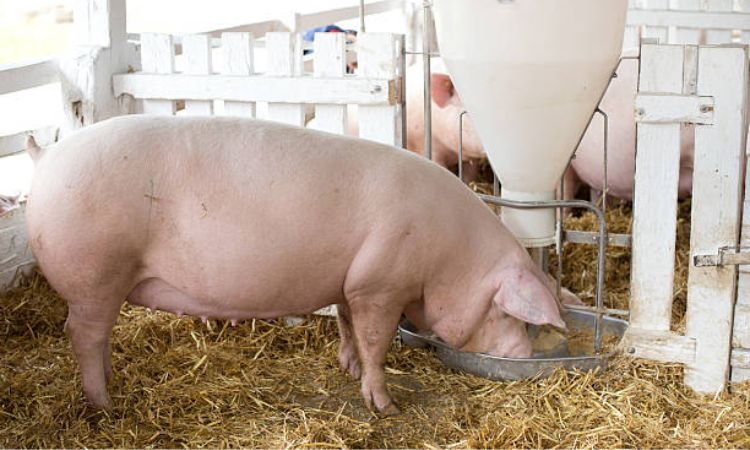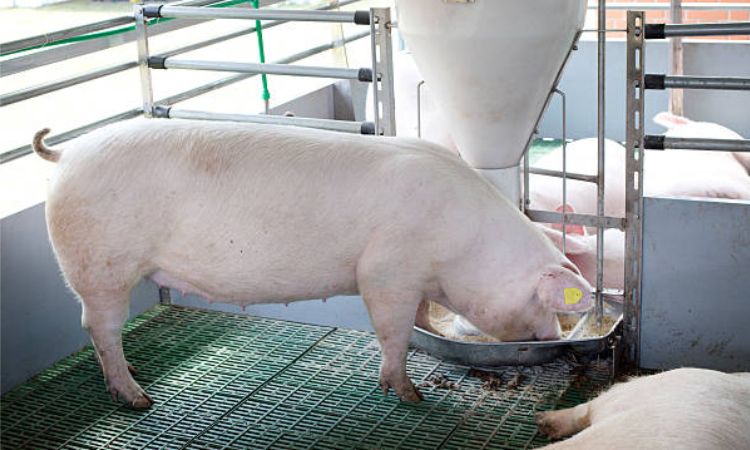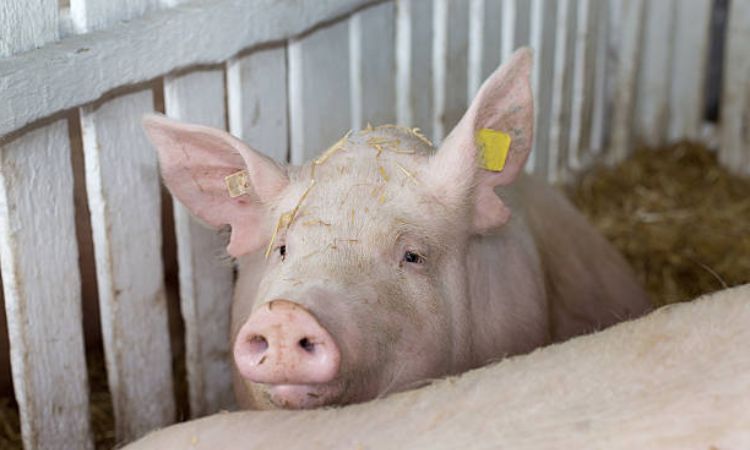When it comes to pigs that combine strength, intelligence, and productivity, few breeds can match the American Yorkshire. Towering in size yet agile and resilient, this iconic breed has become a staple on farms across the United States.
Celebrated for its lean meat, maternal instincts, and adaptability, the Yorkshire isn’t just another pig—it’s a cornerstone of modern swine farming. In this guide, we’ll explore everything from its origins and distinctive traits to its role in today’s agricultural landscape.
Origin and History of the Yorkshire Pig
The Yorkshire pig traces its origins to 18th-century Yorkshire, England, where local farmers sought to develop a large, robust hog capable of producing abundant, high-quality meat. The breed that emerged—originally known as the Large White—was solid white, muscular, and adaptable, with distinctive erect ears. A significant influence on the breed came from Robert Bakewell, who applied selective breeding techniques to the local Leicestershire hogs, creating larger, more productive animals that would form the foundation for many of today’s top Yorkshire lines. By the early 19th century, these pigs had become a staple of English farms, prized both for their meat quality and their ability to thrive in varying conditions.

Yorkshire pigs were first imported into the United States around 1830, with some of the earliest herds established in Ohio and later in Minnesota. These pigs were large, white, and durable, although some early imports displayed lop-ears or may have originated from Lincolnshire rather than Yorkshire. Over time, breeders in North America refined the breed, emphasizing leaner meat and improved growth rates, particularly after World War I when the demand for lard declined. The breed gained widespread acceptance following additional imports of English Large Whites and Canadian stock, valued for their substance, maternal ability, and carcass quality.
Today, the American Yorkshire stands as the most recorded pig breed in both the United States and Canada. Its versatility, durability, and high productivity have made it a cornerstone of modern pork production, widely used for breeding, commercial meat production, and show purposes across North America.
Physical Characteristics and Size of the Yorkshire Pig
Distinctive Appearance
Yorkshire pigs, also known as Large Whites, are instantly recognizable for their striking appearance. Their skin is smooth and predominantly white to light pink, occasionally showing small freckles or dark spots. The head is medium-sized with a broad forehead and a long, clean face, while the erect ears serve as a key breed identifier. The breed’s body is long and well-proportioned, with deep sides, broad shoulders, and a firm back.
Yorkshires are muscular and lean, reflecting their reputation for high-quality meat production. Female pigs (sows) feature well-spaced teats on each side, supporting their exceptional mothering ability. Additional features include short, slightly curled tails and strong, evenly proportioned toes with durable hooves, designed for stability and mobility.
Yorkshire Pig Weight and Dimensions
Yorkshires are large-framed pigs with an impressive weight and stature. Mature sows typically weigh between 500 and 700 lbs (227–318 kg), while mature boars can reach 600 to 800 lbs (272–363 kg). At the shoulder, these pigs usually stand around 2’9″ to 3′ tall, giving them a substantial presence on any farm. Despite their size, their bodies remain proportional, allowing for mobility and activity. The breed is known for a high growth rate and efficient feed conversion, making them a preferred choice for commercial pork production and crossbreeding programs.

Breed Characteristics and Temperament
Maternal and Reproductive Traits: “The Mother Breed”
Yorkshire pigs have earned the nickname “The Mother Breed” due to their exceptional reproductive performance. Sows are highly fertile, consistently producing large litters averaging 10–13 piglets, which is above the average for most commercial pig breeds.
Their mothering abilities are remarkable: sows provide abundant milk, maintain attentive care of their piglets, and rarely exhibit problematic behavior such as rolling on or rejecting their young. These traits, combined with the breed’s durability and structural soundness, make Yorkshires a cornerstone of long-term breeding programs, ensuring both productivity and longevity in farm operations.
Temperament and Behavior
Yorkshires are known for their calm, friendly, and approachable nature, making them easy to manage for both commercial farmers and hobbyists. They are highly intelligent and curious, displaying active and exploratory behavior that requires sufficient space to roam and exercise.
This active disposition, paired with their adaptability, allows them to thrive in diverse environments—from pasture-based systems to semi-intensive housing. Yorkshire pigs also exhibit remarkable resilience to varied climates, demonstrating comfort and productivity in both moderate and challenging outdoor conditions.
Health and Care Considerations
Despite their robustness, Yorkshire pigs require thoughtful care due to certain breed-specific considerations. Their white or pale skin makes them prone to sunburn, so shaded areas or shelters are necessary in sunny climates. Adequate space is critical to prevent stress, ensure mobility, and reduce the risk of joint or hoof problems.
Under proper care, Yorkshires typically live 6–10 years on a working farm, though when kept as pets or in small-scale operations with low production demands, their lifespan can extend to 15–20 years. Routine veterinary attention, balanced nutrition, and proper housing are essential to maintain their health and optimize both reproductive and meat production performance.

Primary Use and Market Value
Yorkshire pigs are primarily raised for their high-quality meat, making them a cornerstone of commercial pork production. Their large, muscular frame and high proportion of lean tissue produce a significant yield of pork cuts, including bacon, ham, pork chops, and ribs. These pigs are also commonly used in crossbreeding programs to improve growth rates, muscle development, and carcass quality in other breeds, thanks to their desirable physical traits and prolific nature.
In the commercial market, Yorkshire pigs are highly valued for both live animal sales and meat production. Feeder pigs, which are sold for further growth, typically command competitive prices per head depending on size and weight, while butcher-ready animals are priced based on hanging weight and overall carcass quality. Regional demand can affect pricing, with areas producing higher volumes often seeing slight variations in market value. On average, the breed demonstrates strong economic efficiency, as their rapid growth, high feed conversion, and ability to produce large litters make them profitable for farmers focused on meat production.
Overall, the Yorkshire pig’s combination of high productivity, adaptability, and meat quality ensures its continued prominence in the pork industry, both as a purebred breed and as a key contributor in crossbreeding programs.
